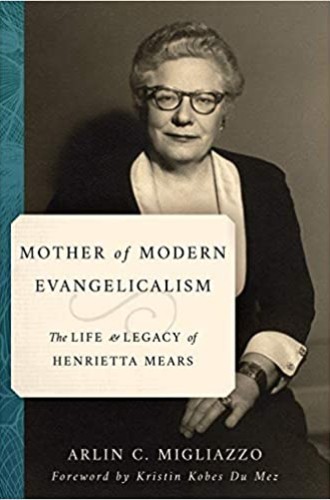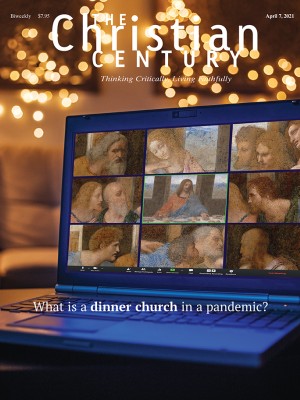Who was Henrietta Mears?
A new biography of the woman who shaped the men who shaped modern evangelicalism
I recently asked a church historian friend why there are so many big Presbyterian congregations on the West Coast. I’d seen this pattern in Seattle, the Bay Area, Southern California, and elsewhere. Their pastors come from Fuller or Princeton. Their faith is winsome and creative. And their churches grow. “Simple,” my friend responded. “It’s because of Henrietta Mears.”
Arlin Migliazzo’s critical biography of Mears is a page-turner that intends to change the field. It shows that Mears is no mere footnote in the rise of modern evangelicalism; she is, instead, the cornerstone. Among her protégés were Billy Graham, Young Life founder Jim Rayburn, and Campus Crusade for Christ founder Bill Bright. Nearly 400 others went into full-time ministry after attending her Sunday school class at Hollywood Presbyterian Church. That class had 6,000 people attending at one point.
Read our latest issue or browse back issues.
So why haven’t we heard of Mears? Well, one, she’s a she, in a movement not given to promoting female forerunners. Mears never once stepped into a pulpit to preach, though several contemporaries called her the best preacher they knew. Two, she lived from 1890 to 1963—which means she died before many scholars outside evangelicalism started paying attention to those within.
Mears never got married, which freed her to travel, speak, write, and found institutions. (Her stock response to why she never married: “Because St. Paul was unavailable.”) She also had a genius for starting things. A member of First Baptist Church in Minneapolis since childhood, as an adult she launched a Sunday school class there while the church was pastored by William Bell Riley, a leading fundamentalist. That class grew into the thousands. She taught the Bible with wisdom and whimsy, as one can see in her book What the Bible Is All About (still in print with 4 million copies sold and counting).
Migliazzo goes out of his way to show that Mears remained staunchly conservative throughout her life. Yet she resisted the ugly face of fundamentalism that First Baptist pastor William Bell Riley displayed as he became increasingly partisan, anti-Semitic, and confrontational with culture. Rather than eschewing or fulminating against all things secular, Mears consistently engaged with the world. For instance, she often lifted up the commitment of Marxists as a goad to Christians to take their faith as seriously. When she started a fellowship for people in the movie industry and converted dozens, one fundamentalist preacher complained that she was undermining his ability to decry show business as godless.
Although she had pledged to become an overseas missionary as a child, Mears found her vocation teaching Sunday school, especially to young people. She shrugged off overtures for faculty positions from Wheaton College and Fuller Seminary, both of which pursued her despite her lack of a doctorate or a seminary degree. Instead she focused on her Sunday school students, the favorites of whom she called “my boys.”
Mears was convinced that ministry had to start with leaders—usually men—and others would follow. She had a habit of finding out who the student body president was at a local university, arranging an introduction, converting the young man, and then watching him entice his friends into her fellowship. (Here we can see the roots of Young Life’s emphasis on attracting the popular kids so as to draw the others.)
Mears also had a habit of accidentally starting institutions. One year she mailed back the official Presbyterian Sunday school materials in disgust over their poor modernist apologetics—St. Paul survived a shipwreck by eating his vegetables? Really!—and began writing her own. The leaders of other congregations soon noticed her class’s growth and came begging to buy her work. When she could refuse no longer, she started printing it and selling it. Soon she had a publishing company working all around the world, selling hundreds of thousands of copies of curricula.
The Presbyterian Church didn’t endorse her work, but her start-up, Gospel Light Publications, did just fine without them. Migliazzo recounts a denominational bureaucrat complaining to Hollywood Presbyterian’s senior pastor about “the Baptist” who was teaching at his church. (By that time, Mears was calling herself a “Bapterian.”) The pastor responded that he would consider a Presbyterian if any of them anywhere were doing half as much good as Mears was.
Mears’s appeal is evident in the work of Bright, who was deeply influenced by her theology. We might roll our eyes at his opening claim in Four Spiritual Laws that “God loves you and has a wonderful plan for your life.” But in a context that typically started with threats of hell, this positive sentiment was revolutionary. I’m haunted by a question Mears would ask of her Sunday school teachers: How many people in your class have you led to Christ in the last three months? As uncomfortable as many mainline Protestants are with evangelism, every church on the planet exists only because someone once evangelized someone else.
Mears influenced Graham less deeply than some of her other students. (Bright and his wife, for instance, lived with Mears for 11 years.) But at a key moment when Graham was wavering on whether he could “trust the Bible” enough to evangelize—partly due to the influence of his friend Charles Templeton, who was learning historical criticism at Princeton Seminary—Mears nudged him toward trust. She also prompted Graham to lead the 1949 Los Angeles revival that became his watershed.
Mears left a complicated legacy regarding social justice. In some ways, she practiced it. Young Life’s adage that evangelists have to “earn the right to be heard” came from her, and she was committed to the church helping those in the most dire need. During her travels in postwar Europe she learned about the Holocaust and became interested in helping Jewish people worldwide and supporting the nascent state of Israel (partly, it must be admitted, because of her dispensationalist biblical hermeneutic).
She was far less able to see the needs in her own neighborhood, especially among Latinos and African Americans. Mears’s early Sunday school literature included embarrassingly racist language. And even in the early 1960s she did not begin to advocate for civil rights.
Migliazzo doesn’t linger over questions of gender, but he portrays Mears as devoted to finding spouses for both her “boys” and the young women among her thousands of devotees. He mentions no one who followed her lead, stayed single, and started megachurch-sized Sunday school classes. Perhaps she was a genuine sui generis. Migliazzo makes it clear that without her, it is impossible to understand either West Coast Presbyterianism or American evangelicalism generally.
A version of this article appears in the print edition under the title “Henrietta who?”






